How To Get Maid Service In Dvc Room
Data Versioning with DVC
The Hands-on tutorial

Introduction
In the previous post, we've learned how important information technology is to version command the information for automobile learning projects. This article volition show you step-by-step how to really do it using the tool called DVC.
Let's become started!!!
Installation
DVC can be installed in two ways: every bit a Python library and a standalone application. A Python library arroyo is recommended because, in addition to the control-line interface, yous tin also employ its Python API to programmatically access information or models. Notwithstanding, you lot get well-nigh everything from the standalone fashion. And so, use the option y'all are comfy with. To install, just use the following command:
pip install dvc For the standalone mode, follow this official installation guide.
Initiating DVC
Before using DVC, yous demand to initiate it with the post-obit control so that all the necessary configurations are generated. ( Notation : This should happen in the root of a Git repository.)
dvc init Once the command finish, you lot'll see that 1 file and one folder are generated: .dvcignore and .dvc. You can ignore .dvcignore at the moment, it is for advanced uses which volition not be covered right now. If you aggrandize the .dvc binder, you volition meet folders and files inside. Nosotros'll use just .dvc/config file later in this article when configuring the remote storage. To complete the initiation, add all the files to a Git repository and commit.
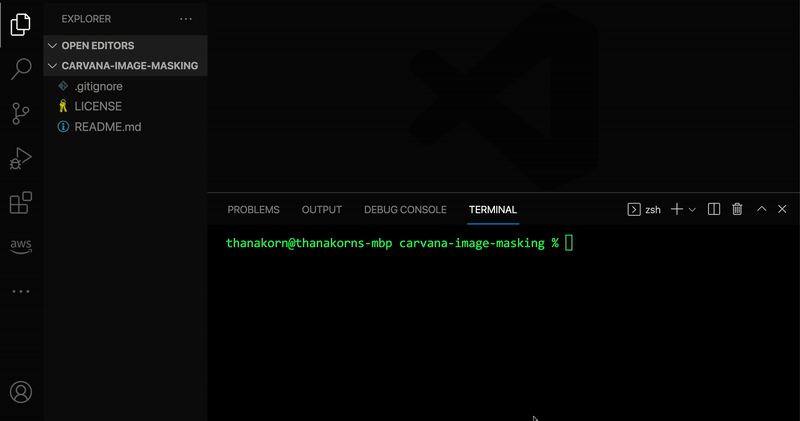
Tracking the data
To starting time versioning the file, use the command
dvc add <path-to-file-or-folder> The command will generate 2 files: .gitignore and .dvc
- .gitignore — This file excludes a file/folder from a Git repository.
- <file-or-folder name>.dvc — This file is metadata storing information near the added file/folder and associates with a specific version of data.
Yous can think of the .dvc file as a placeholder pointing DVC to the actual information. To version control our information, this file needs to be added into a Git repository using the post-obit commands:
git add .gitignore <file-or-folder-name>.dvc
git commit -yard "Add data to projection" This is all you need to do to version the information. However, I'd highly recommend creating a Git tag for this commit. Having tags make switching between versions of data more than user-friendly as yous don't demand to wait up all commits to notice the one you desire. To create a tag, utilise the following control:
git tag -a <tag_name> -1000 <Clarification> 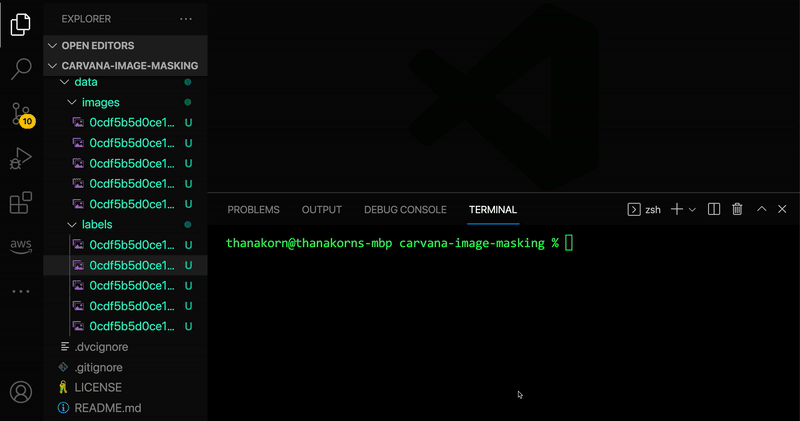
Pushing the data to a remote server
Although the data is tracked past DVC, it is but available locally. This is very risky because if something happens to our automobile, the data is gone forever. Therefore, having remote storage for the information is mandatory because it ensures everything is safely backed upwardly. DVC has the functionality to support that. Hither is how to use it.
First, you demand to configure the remote storage using the following command:
dvc remote add -d <storage_name> <url_to_remote_storage> Once the command is finished, y'all'll notice that the .dvc/config file is modified to exist like this
[core] remote = storage_name ['remote "storage_name"'] url = url_to_remote_storage
Now yous can upload your information to cloud storage using:
dvc push Depending on your deject storage provider, you might need to configure your cloud storage credentials. In this post, we're using Google Bulldoze which will ask you lot to verify yourself via the authentication link. The GIF below shows you how to upload data to Google Drive using DVC step-by-step.
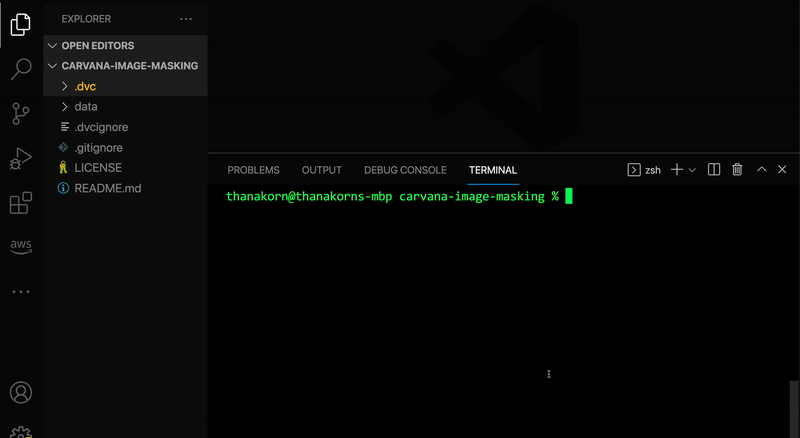
Modifying the data
What we have done until now is simply tracking and backing upward. But the true benefits of information versioning stand out when we start modifying the information.
To change data, you only just update(or supercede) the content of the file/binder and so execute the aforementioned commands as when you lot add it. You'll observe that the .dvc file has changed. For every version you lot want to have a SNAPSHOT, commit the metadata file associated with it. Check out the GIF below to come across how this looks like.
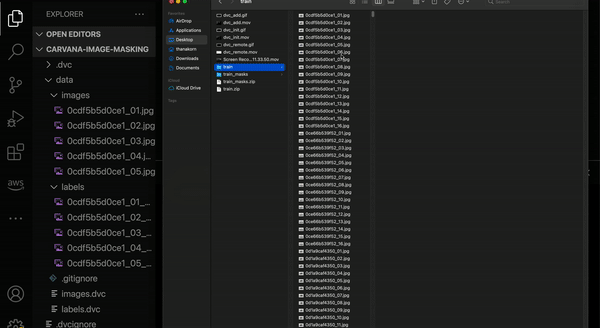
Switching the data
From the previous sections, we accept 2 versions of data. Suppose we find that the latest 1 is problematic so we need to switch dorsum to the first. Here is how y'all can practice.
Cheque out the .dvc file to the commit that the commencement data version is added
git checkout <commit_id> <file-or-binder name>.dvc If you've created a tag for that, you lot can likewise utilise
git checkout <tag_name> <file-or-folder name>.dvc This is why creating a tag is recommended at first considering it'due south easier to look up something meaningful like tag names than commit ids that are completely random.
Then, retrieving that particular version using
dvc pull The motion picture below shows how to switch data version step-by-step.
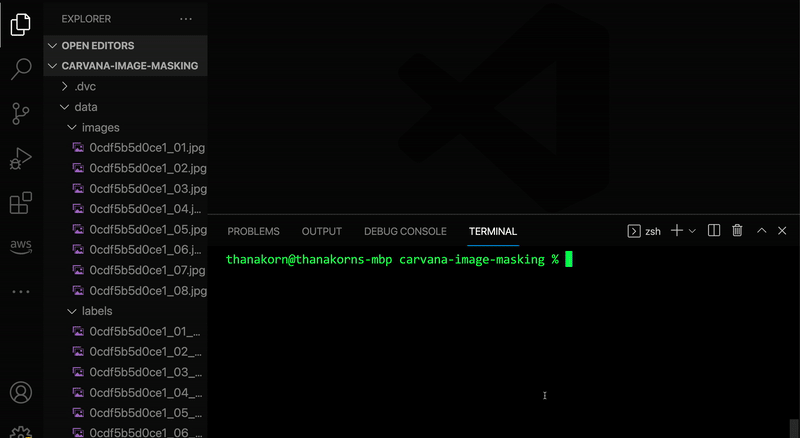
Conclusion
In this post, we have learned how DVC works overall too equally how to use its bones functionalities. This should assist you lot see a picture of information versioning in practice.
However, these are only the tip of the iceberg of the features that DVC offers. In that location are a bunch of other avant-garde features that can improve the productivity of your data science projects such every bit information pipeline, metrics and experiments, and Continuous Integration. In the future, we'll have tutorials for those in the future. But if you would like to check it out by yourself, go to the official documentation.
Thank you then much for spending your precious fourth dimension reading this article. If you take any questions or comments, leave them below. I will attempt to reply them every bit good as I can.
See you in the next post!
Source: https://medium.com/@thanakornpanyapiang/data-versioning-with-dvc-a474af1247f5?source=read_next_recirc---------2---------------------ee65e4d1_cef1_4a4e_a335_027a54266f17----------
Posted by: garrisonvaccom.blogspot.com


0 Response to "How To Get Maid Service In Dvc Room"
Post a Comment